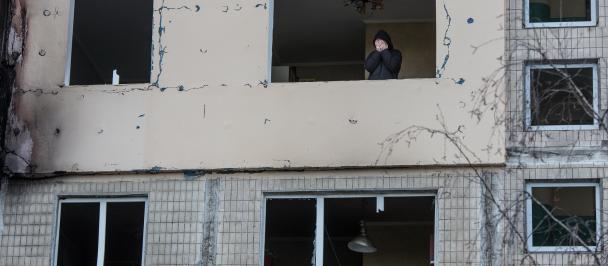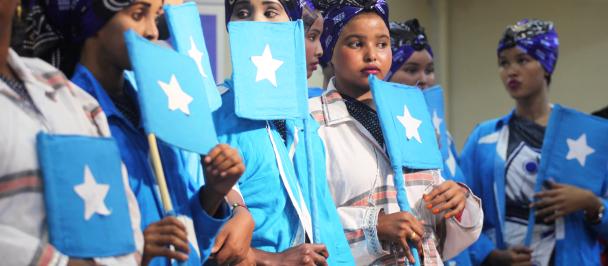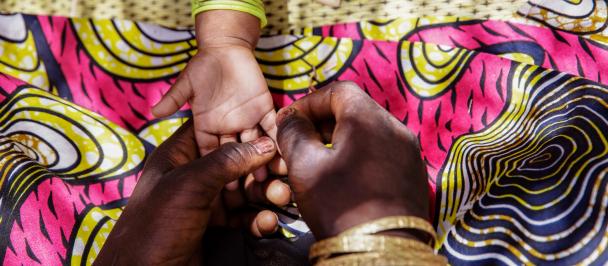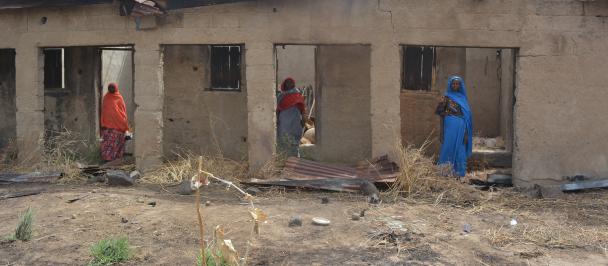Deaths from terror attacks and violent extremism were down by nearly one-third in 2017. But for women and children with links to extremist groups, the nightmare of living under ISIS or Boko Haram is far from over—with governments overwhelmed and unequipped to reintegrate and rehabilitate them. At the local level, it is women-led community organizations that are picking up the pieces.
The scale of the problem
In Syria, Kurdish authorities are reportedly holding some 2,000 foreign women and children believed to have been associated with ISIS. In Nigeria, thousands of women and girls associated with Boko Haram—abducted, or conscripted, recruited, bullied, or bribed—are now housed in military camps, vulnerable to abuse and stigmatized by their communities.
From Lebanon and Tunisia to Kenya, Indonesia, and beyond, men and women linked to violent extremist groups seek to cross international borders and return home, often accompanied by children.
A new United Nations Development Programme (UNDP)-International Civil Society Action Network (ICAN) report, Invisible Women: Gendered Dimensions of Return, Reintegration, and Rehabilitation, aims to document challenges related to reintegrating women and girls associated with violent extremist movements and establish a preliminary evidence base of best practices for addressing them.
In every context, the study finds, gender dynamics play a critical role. Returning women and girls who are victims of sexual violence face additional stigma and have distinct psychosocial and health needs. They suffer economic consequences, too: widows of men who joined ISIL in Iraq or Syria must now earn incomes while caring for their children alone.
In Iraq, foreign widows of former fighters may face the death penalty regardless of their role in the movements. The status of many children and orphans remains unknown. In Nigeria and elsewhere, if women return to their communities and face the lack of opportunity alongside the stigma of being affiliated with violent extremists, the risk of re-radicalization and re-recruitment increases.
Feared and distrusted
Fear, anger, and mistrust from communities toward returning women and children runs deep in every setting, often with deadly consequences. Government meanwhile must protect and ensure justice for their citizens, while ensuring due process, dignity, and adherence to human rights laws for these returnees.
In many cases mothers, wives, and sisters may be in contact with their male relatives still involved in extremist groups—muddying the notion of what it means to be “associated” or “affiliated” with extremists, and complicating the task of reintegration processes owned by and beneficial to the wider community.
Trusted local women’s organizations have been leading efforts to identify and address the dire situation of women and children returning or left behind, offering including trauma counseling, livelihoods training, and safe access to local police and authorities.
They also tackle the ideologies that fostered extremism, offering alternative narratives that reject violence and intolerance. Yet these organizations remain largely excluded from national plans to prevent and counter violent extremism.
Among the report’s key findings:
· Most countries lack consistent policies or laws pertaining to the treatment of returnees associated with terrorist and violent extremist groups—especially in the case of women and children.
· The ratio of women to men returning to their countries of origin varies significantly by country—and in many cases women are not returning because they are unable to attain citizenship status and custody of children born during their time in Syria, Iraq, or elsewhere.
· Women and girls who do return face tremendous anger, fear, and stigma from communities. This isolates them and inhibits their ability to reintegrate. It also heightens their vulnerability to re-recruitment into extremist groups, which co-opt them with offers of support and belonging.
· Current policies and programming tend to either ignore these women and girls or frame them as victims or perpetrators of violence, whereas in most instances their links to extremist groups and relatives is complex.
· Despite their misogyny, many violent extremist groups have co-opted the message of women’s empowerment and even provide better socio-economic conditions. They tap into ideology and identity to provide a sense of purpose, meaning and belonging that vulnerable women and girls are missing in their lives. Governments must also address the misogyny, injustice and deficit in dignity that women experience in their own societies. Otherwise there is a continued risk of women being drawn to the messages of violent extremist groups.
· Many of the women are widows and must fight stigma even as they become breadwinners for the first time. Programming must help them earn livelihoods, which can prevent them from being pressured into joining or rejoining extremist groups.
· Local organizations are often the ones first alerted to these issues and are at the front lines of responding to the complex challenges faced by women and girl returnees. They have pioneered effective, holistic response programmes that tackle psychosocial, economic, and ideological needs—but remain excluded from national and local programming and vulnerable to security risks.
Nika Saeedi has over 19 years of experience in policy development, programme design and management, and partnership building on women, peace and security. She plays a key role in the implementation of UNDP’s Global Programme for the Prevention of Violent Extremism, which supports governments to implement development approaches that address the structural and root causes of violent extremism.
Sanam Naraghi Anderlini is the Founder and Executive Director of ICAN, spearheading the Women’s Alliance for Security Leadership with member organizations active in preventing violent extremism by promoting peace, rights and pluralism in over 30 countries.

 Locations
Locations



